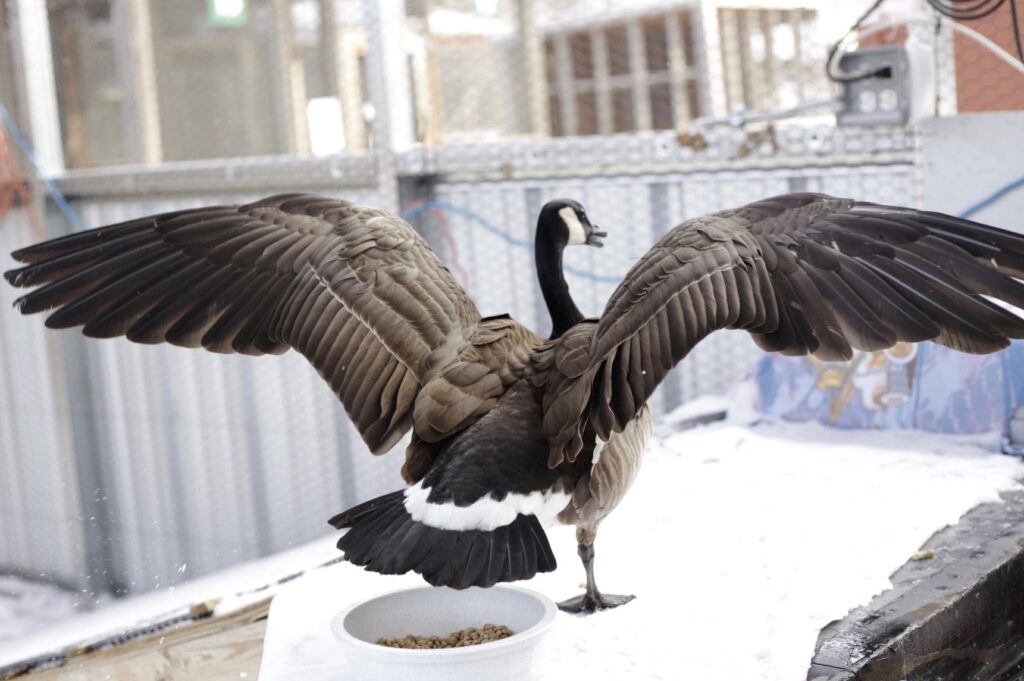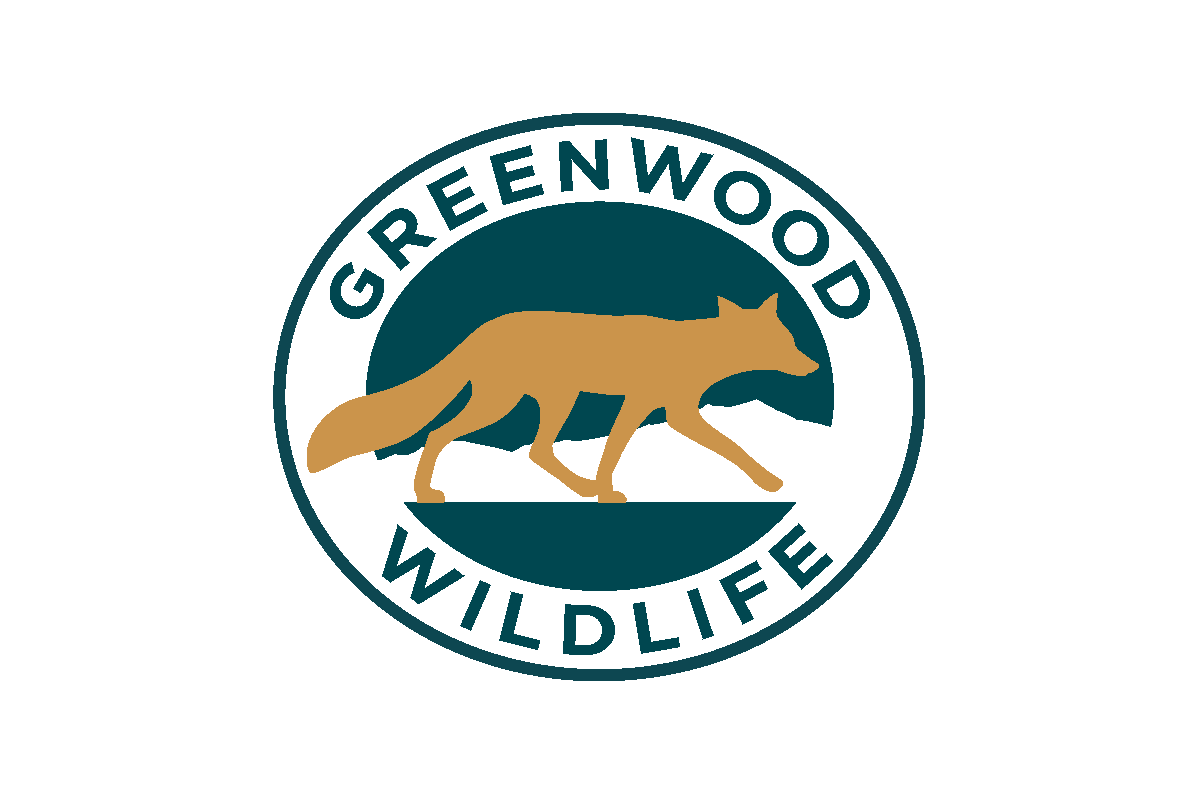
After finding it nearly unresponsive in her Greeley yard, a rescuer brought a Canada Goose to Greenwood. Once on the exam table, the Greenwood intake staff discovered many broken flight feathers, an emaciated body, and wounds all over its chest. The medical team administered pain medications, antibiotics and fluids, and scheduled an X-ray to further assess the bird’s condition. Fortunately, the goose improved, and the X-rays showed metal gunshot scattered throughout its torso. It was likely the victim of an unsuccessful hunt. The open wounds were probably the cause of the infection that was starting to manifest in its bloodstream and had made the bird so weak.
Greenwood knew this goose had a long road to recovery, which would include weeks of pain medications, de-wormers, nutritious feed, antibiotics, and rest. But the biggest concern was that with the missing flight feathers, the bird would not be able to fly again until its summer molt, which was months away. This goose would need a feather” transplant” after it had recovered. Luckily, Greenwood knew someone who could help with this situation. Anne Price, the President of the Raptor Education Foundation, had repaired many feathers on raptors, through a procedure called “imping”. Anne agreed to imp new feathers onto the damaged ones. Our veterinarian, Dr. Hazel, decided the goose would need to be under anesthesia to prevent stress and keep the animal still while carefully replacing its damaged feathers with new ones, which came from a deceased goose.
The procedure started once the bird inhaled the anesthetic gas that brought on a restful slumber. The team jumped into action right away, trimming the broken feathers and getting the glue ready. If an animal is under anesthesia for too long, it can be detrimental to its health, so the team had to work quickly. Anne carefully shaved bamboo dowels to fit perfectly into the shafts of the new feathers. These dowels act as an attachment to the broken shaft on the bird’s wing. Once the dowel is the perfect size, medical grade glue is used to adhere it to the bird’s original feather shaft. Seven feathers and over an hour of anesthesia later, the goose sported a completely repaired wing, nearly ready for the wild. After a few days of flight testing and ensuring the imped feathers were still in good condition, Dr. Hazel approved the goose’s release.
In the heart of winter, it can be challenging to find open water. A dedicated Greenwood volunteer drove the Canada Goose over ten hours roundtrip to the southeast corner of Colorado to a perfect release spot on open water. It jumped from the transport bin, waddled out to the water’s edge and took its new feathers for a spin.
It takes expertise, resources, optimism, and caring people who are willing to collaborate to make a wildlife release happen. Greenwood is incredibly thankful to Anne Price for her help with this goose and for the community of wildlife lovers that make it possible for hundreds of patients each year to see the wild once again.


